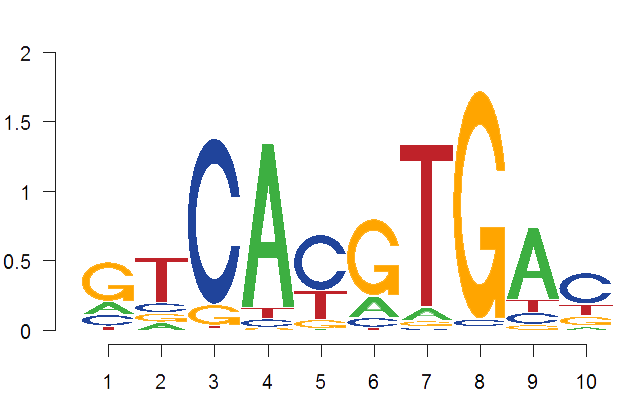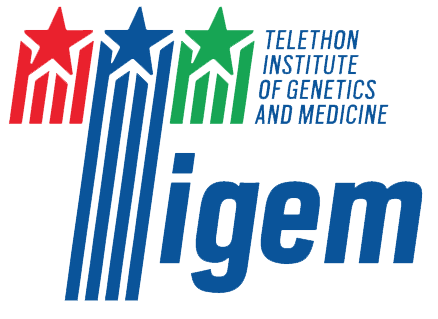| Num |
Datasets |
TFEB Gene Perturbation |
Experimental Data |
Species |
GEO Accession Code |
Summary |
Experimental Details |
References |
PubMed ID |
| 1 | TFEB Time Series | over-expression | RNA-seq | Homo Sapiens | GSE98247 | Transcriptome profile of a stable clone over-expressing TFEB in HEK293 cells by TET-OFF system (HEK293-PFL-TFEB) | Total RNA was extracted at time 0 in presence of tetracycline to evaluate the basal expression level of TFEB and at each time point (from 6 to 90h) from the removal of tetracyclineto evaluate the effect of TFEB over-expression. | Gambardella G, Staiano L, Moretti MN, De Cegli R et al. GADD34 is a modulator of autophagy during starvation. Sci Adv 2020 Sep;6(39). PMID: 32978159 | 32978159 |
| 2 | TFEB HeLa | over-expression | microarrays | Homo Sapiens | GSE16267 | The first TFEB transcriptome study performed in HeLa cells following TFEB transient transfection | Total RNA samples from three biological replicates in which TFEB was transiently over-expressed in HeLa cells by transfection using a pcDNA3 vector and total RNA samples from HeLa cells transfected with an empty pcDNA3 vector were used as control | Sardiello, M., et al., A gene network regulating lysosomal biogenesis and function. Science, 2009. 325(5939): p. 473-7. PMID: 19556463 | 19556463 |
| 3 | TFEB-GFP HeLa | over-expression | microarrays | Homo Sapiens | GSE73055 | Transcriptome analysis of HeLa cells stable clones over-expressing TFEB-GFP | Total RNA was extracted from the cells of three TFEB-GFP biological replicates; RNA extracted from HeLa WT cells was used as control. | Nnah, I.C., et al., TFEB-driven endocytosis coordinates MTORC1 signaling and autophagy. Autophagy, 2019. 15(1): p. 151-164. PMID: 30145926 | 30145926 |
| 4 | TFEB-3xFLAG HeLa | over-expression | microarrays | Homo Sapiens | GSE73054 | Transcriptome analysis of HeLa cells stable clones over-expressing TFEB-3xFLAG | Total RNA was extracted from the cells of three TFEB-3xFLAG biological replicates; RNA extracted from HeLa WT cells was used as control. | generated for this study | |
| 5 | TFEB LIVER - OE | over-expression | microarrays | Mus Musculus | GSE41139 | Transcriptome analysis of the injected mice overexpressing TFEB specifically in liver in order to identify the effects of TFEB overexpression on the liver transcriptome | Total RNA was extracted from mice injected with an adenoviral vector that expresses human TFEB (HDAd-TFEB) under control of the liver-specific promoter PEPCK. Mice injected with a transgene-less vector were used as control. | Settembre, C., et al., TFEB controls cellular lipid metabolism through a starvation-induced autoregulatory loop. Nat Cell Biol, 2013. 15(6): p. 647-58. PMID: 23604321 | 23604321 |
| 6 | TFEB LIVER - OE/ PPARA-KO | over-expression of TFEB and KO of PPARα | microarrays | Mus Musculus | GSE41140 | Transcriptome analysis of PPARα (peroxisome proliferator activated receptor alpha) knockout (KO) mice injected with TFEB specifically in liver | For the analysis on the injected PPARα-KO mice overexpressing TFEB, total RNA was extracted from the liver of three mice; RNA extracted from the liver of not-injected mice was used as control. | Settembre, C., et al., TFEB controls cellular lipid metabolism through a starvation-induced autoregulatory loop. Nat Cell Biol, 2013. 15(6): p. 647-58. PMID: 23604321 | 23604321 |
| 7 | TFEB MUSCLE - OE | over-expression | microarrays | Mus Musculus | GSE62975 | Transcriptome analysis of the injected mice overexpressing Tcfeb specifically in skeletal muscle | For the analysis on the injected mice with an AAV vector expressing Tcfeb, total RNA was extracted from the muscle of three mice; RNA extracted from the muscle of mice injected with an AAV vector expressing GFP was used as control. | Mansueto, G., et al., Transcription Factor EB Controls Metabolic Flexibility during Exercise. Cell Metab, 2017. 25(1): p. 182-196. PMID: 28011087 | 28011087 |
| 8 | TFEB MUSCLE - KO | KO | microarrays | Mus Musculus | GSE62976 | Transcriptome analysis of the Muscle-specific conditional TFEB KO mice | Muscle-specific conditional TFEB KO mice were generated by crossing Tcfeb floxed with MLC1f-Cre transgenic mice: total RNA was extracted from the muscle of three mice; RNA extracted from the muscle of three wt muscles was used as control. | Mansueto, G., et al., Transcription Factor EB Controls Metabolic Flexibility during Exercise. Cell Metab, 2017. 25(1): p. 182-196. PMID: 28011087 | 28011087 |
| 9 | TFEB KIDNEY P0 - OE | over-expression | microarrays | Mus Musculus | GSE62977 | Transcriptome analysis of mice overexpressing Tcfeb specifically in kidney: the age of the mice was P0 | Transcriptome analysis of Tcfeb overexpression on the kidney transcriptome, was performed for the double heterozygous KSP_CRE/KSP_Tcfeb mice as compared to control KSP_CRE mice: total RNA was extracted from the kidney of three mice at P0; RNA extracted from the kidney of two mice at P0 was used as control. | Calcagni, A., et al., Modelling TFE renal cell carcinoma in mice reveals a critical role of WNT signaling. Elife, 2016. 5. PMID: 27668431 | 27668431 |
| 10 | TFEB KIDNEY P14 - OE | over-expression | microarrays | Mus Musculus | GSE63376 | Transcriptome analysis of on 14 days old mice overexpressing Tcfeb specifically in kidney. | Transcriptome analysis of Tcfeb overexpression on the kidney transcriptome, was performed for the double heterozygous KSP_CRE/KSP_Tcfeb mice as compared to control KSP_CRE mice: total RNA was extracted from the kidney of three mice at P14; RNA extracted from the kidney of three mice at P14 was used as control. | Calcagni, A., et al., Modelling TFE renal cell carcinoma in mice reveals a critical role of WNT signaling. Elife, 2016. 5. PMID: 27668431 | 27668431 |
| Num |
Datasets |
TFEB Gene Perturbation |
Experimental Data |
Species |
GEO Accession Code |
Summary |
Experimental Details |
References |
PubMed ID |
| 1 | TFEB HEK-293 | over-expression | ChIP-seq | Homo Sapiens | GSE98246 | Genome-wide chromatin immunoprecipitation sequencing (ChIP-seq) in a monoclonal population of HEK-293 cells stably expressing a Tet-OFF regulatory system (i.e. HEK293-PFL-TFEB). | In order to identify the direct target of TFEB, a ChIP-seq in HEK293-PFL-TFEB cells was performed after removal of tetracycline: samples were collected at 18, 36 and 90 hours. Two ChIP samples for each timepoint and one immunoglobulin G (IgG) control samples were subjected to Illumina high-throughput sequencing and mapped to the reference human genome hg19 | Gambardella, G., et al., GADD34 is a modulator of autophagy during starvation. Sci Adv, 2020. 6(39). PMID: 32978159 | 32978159 |
| 2 | TFEB HeLa | over-expression | ChIP-seq | Homo Sapiens |  | The first comprehensive map of the TFEB targetome performed by ChIP-seq in Hela stable clones, in a steady-state condition. | In our database we named the TFEB direct targets identified in this study as “YES” if the binding was found in the promoter region at -1kb from the transcription start site (TSS), otherwise the absence of binding is shown as “NO”. For each peak we reported genomic coordinates on hg19 (i.e. start and end); distance from the Transcriptional Start Site (TSS) of the closest gene; official gene symbol. TFEB ChIP-seq binding sites within -1 Kb and 0 from their transcription start site (705 gene symbols in total) | Palmieri, M., et al., Characterization of the CLEAR network reveals an integrated control of cellular clearance pathways. Hum Mol Genet, 2011. 20(19): p. 3852-66. PMID: 21752829 | 21752829 |


